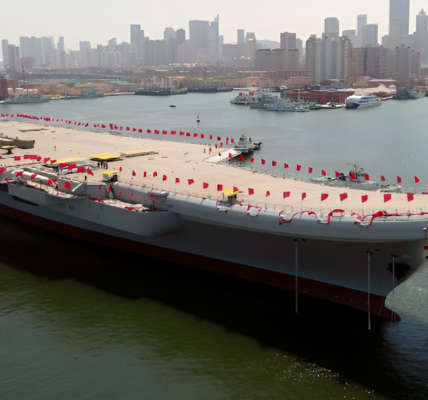
Retired Taiwanese Navy Captain Lu Lishi, a leading expert on Taiwan’s military, has raised an alarming warning in his latest report, “Taiwan’s Imminent Air Defense Crisis.” Lu argues that Taiwan’s Air Force and air defense systems are in dire need of immediate upgrades to counter the growing military power of China. Without rapid improvements, he predicts that Taiwan would be unable to defend itself effectively, stating that “Not even the Gods or Buddha” could prevent a swift defeat in the event of conflict.
At the heart of Taiwan’s vulnerability is its inability to contest air superiority, even within its own airspace. While Taiwan’s military once held a technological edge over China, the gap has closed rapidly as China has modernized its forces since the 1990s. Today, Taiwan’s air fleet is largely composed of outdated fighters such as the fourth-generation Mirage 2000, F-16A, and the indigenous Ching Kuo, all of which are lightweight, short-range platforms developed in the 1970s and 1980s. These aircraft would struggle to match the long-range, advanced air superiority fighters now in China’s arsenal, such as the Su-35 and the J-20. These high-tech platforms, of which China fields hundreds, give it a significant advantage both in numbers and technological capability. In a conflict, Chinese fighters would likely dominate the skies over Taiwan, rendering the island’s air force largely ineffective.
Taiwan’s fighters are not only outclassed in air-to-air combat, but they are also highly vulnerable to China’s surface-to-air missile (SAM) systems. Nearly half of Taiwan is within the effective range of China’s S-300 and HQ-9 missile systems, and the entire island falls within the range of the newer S-400 Triumf, which can target aircraft up to 400 kilometers away. These advanced SAM systems are designed to detect and neutralize both advanced, radar-evading stealth fighters and conventional aircraft like those in Taiwan’s fleet. With these powerful Chinese systems in place, Taiwan’s air force could be grounded within hours of conflict, and any aircraft that manages to take off would be neutralized quickly by either SAMs or superior Chinese fighters.
The situation is further compounded by Taiwan’s inadequate air defense systems. The island’s Patriot missile batteries, purchased from the United States, have a disturbingly low interception rate—estimated to be between 2% and 30%. Even in the best-case scenario, these systems could only target a small fraction of the thousands of Chinese missiles aimed at Taiwan. With the same Patriot systems tasked with intercepting Chinese aircraft, Taiwan’s defense would be woefully insufficient. The island’s indigenous Sky Bow system, which is derived from the Patriot, offers little improvement in this regard.
Lu Lishi’s analysis presents a bleak outlook for Taiwan’s ability to maintain air superiority in the event of conflict. With Taiwan’s current air and missile defense capabilities, it is likely that the island would lose control of its airspace within a day. From that point, a Chinese invasion would be almost inevitable, regardless of Taiwan’s large and sophisticated ground forces. Taiwan’s small and geographically isolated territory would make it nearly impossible to mount an effective defense, and the most likely outcome would be an early surrender under terms favorable to China.
However, Taiwan’s military shortcomings may be overshadowed by a larger geopolitical reality. While large-scale missile attacks on Taiwan would be devastating, they are unlikely to be China’s primary strategy. Beijing would likely seek to avoid excessive destruction or alienating the Taiwanese population, as the island is viewed as an integral part of China. The rising pro-unification sentiment on Taiwan, combined with China’s economic strength, makes peaceful reunification a far more plausible outcome. China has little to gain from escalating a conflict in the Asia-Pacific region, especially when it can achieve its goals through peaceful means.
China’s growing military modernization, coupled with Taiwan’s stagnant defense capabilities, gives Beijing an increasing advantage. The longer China maintains peace, the more its military edge will grow, making any future conflict much easier to win. For Taiwan, the clock is ticking, and without significant upgrades to its air defense systems, the island’s window for resisting Chinese military pressure will continue to close



